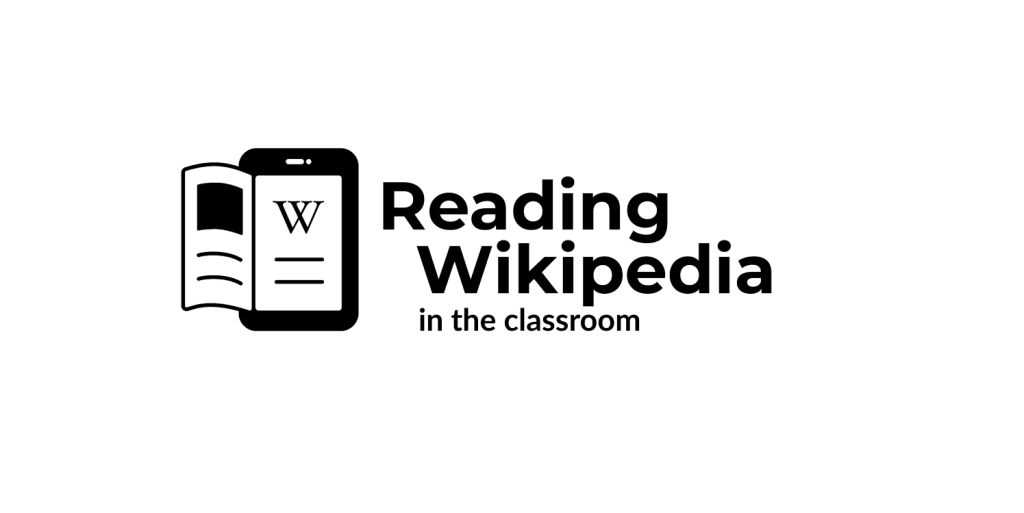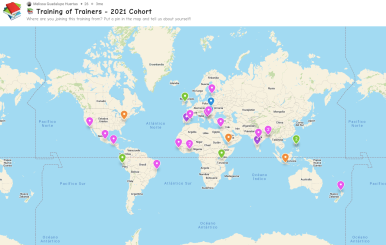
Last October 2021, the Education team at the Wikimedia Foundation welcomed the first cohort of wikimedians to the Training of Trainers (ToT) for “Reading Wikipedia in the Classroom”. In December, 22 participants successfully completed the ToT and they are ready to support more teachers in their countries to use Wikipedia as a pedagogical tool. In this article, learn more about “Reading Wikipedia in the Classroom”, what the ToT program entails, and how you can be part of the second cohort!
What is “Reading Wikipedia in the Classroom”?
In 2020, along with Wikimedia affiliates in Bolivia, Morocco and the Philippines, the Education team at the Wikimedia Foundation piloted the “Reading Wikipedia in the Classroom” program with the participation of hundreds of secondary school teachers in these three countries. “Reading Wikipedia in the Classroom” is an 8-week online professional development opportunity for secondary school teachers to learn how to approach Wikipedia as a pedagogical tool. The curriculum is designed in alignment with UNESCO’s Media and Information Literacy framework and it allows teachers to understand how to use Wikipedia to access, evaluate and create information and how it can help further develop important 21st century skills in their students. After the positive impact of this pilot the user groups in Bolivia and Morocco successfully applied to project grants and they are leading new implementations of Reading Wikipedia in the Classroom this year – thus strengthening the impact of their work in their local education sector.
What is the Training of Trainers for “Reading Wikipedia in the Classroom” program?
As the next stage for “Reading Wikipedia in the Classroom”, in October 2021 the Education team invited wikimedians and educators interested in implementing this program to join the first Training of Trainers (ToT) experience. Through the ToT model, we seek to support new implementations of the program around the world led by motivated and prepared Wikimedians and educators.
The ToT is a 9-week online learning experience with a global cohort of peers interested in education, Wikipedia, teacher development, and 21st century skills. At the end of the ToT, the participants are equipped to lead a local implementation of the Reading Wikipedia in the Classroom in their countries. The participants who successfully complete the program receive a certificate of accomplishment, an open badge, and the opportunity to access financial support for their local implementations. As certified trainers, they are able implement the program to foster a better understanding of Wikipedia in their local education sector, empowering educators to critically approach Wikipedia instead of keeping it out of their classrooms altogether.
What do participants learn in this Training of Trainers program?
In the 9 weeks of the ToT program, participants work through a curriculum designed to prepare them to implement the Reading Wikipedia in the Classroom program in a way that is aligned and pertinent to their local education context. The ToT is hosted in the WikiLearn platform (an instance of Open edX) where participants have access to educational resources and communication spaces, this is complemented by 3 synchronous training sessions and optional weekly office hours for open conversations and support.
The program consists of three core modules:
- Module 1 – Learn: Participants are able to express the value of the Reading Wikipedia in the classroom curriculum to a variety of audiences, and they are able to identify areas for localization that ensure the program is in line with pertinent educational policies, practices, and the lived realities of teachers and students.
- Module 2 – Teach: Participants are able to design and facilitate an engaging program, whether online, offline, or blended, that is focused on the learner’s context.
- Module 3 – Plan: Participants are able to create an implementation plan that includes needs assessment, outreach and partnership, budget, and monitoring & evaluation strategies.
Each module contains formative assignments, exercises and discussion prompts that allow participants to socialize their learning and finish the ToT with a robust program implementation plan.
Who participated in the first cohort of the Training of Trainers program?
In 2021, we received the applications of 126 interested wikimedians from all over the world and after a hard evaluation period, we invited 26 participants to join this first cohort. At the end of the program, 22 participants successfully completed all the requirements and are now certified trainers of the Reading Wikipedia in the Classroom program. These new trainers come from 18 countries including El Salvador, Yemen, Nigeria, New Zealand, and Ukraine, to name a few. You can see a list of the newly certified trainers on this link. Moreover, this multicultural cohort strengthened bonds of cooperation, promoted knowledge sharing, and took advantage of the course forums and synchronous conversations to promote a positive and supportive learning environment.
Join the next cohort and become a certified trainer!
The applications to join the second cohort of the ToT are open! Find all the information on Meta-Wiki and submit your application before February 20, 2022. Apply if you’re interested in becoming a certified trainer and bringing the Reading Wikipedia in the Classroom program to your country. This second cohort will take place from March-May 2022 and participants who successfully complete the ToT will gain access to the same opportunities: certifications, funding for implementation, multicultural professional cohort.Join our upcoming information session this Friday, February 11 at 13:00 UTC and share any questions or doubts you may have about the application process. Find all the info to join on Meta-Wiki or watch the recording afterwards.

Can you help us translate this article?
In order for this article to reach as many people as possible we would like your help. Can you translate this article to get the message out?
Start translation
